The Great Wall of China longer than previously thought
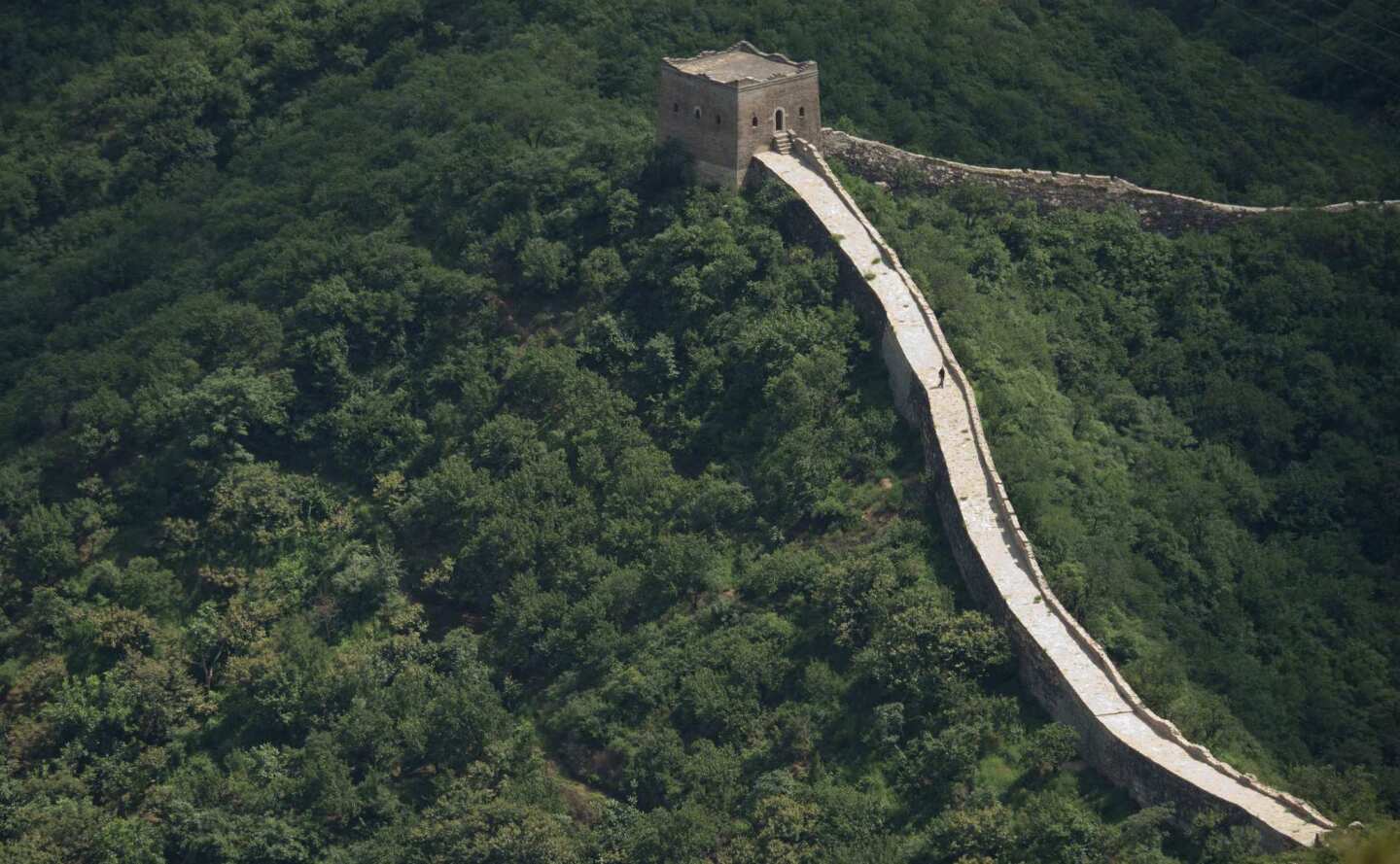
A partially reconstructed stretch of the Great Wall awaits visitors at the Qinglong Gorge tourist area near Beijing. Qinglong Gorge, with its range of mountains, reservoirs and Great Wall relics dating back to the Ming Dynasty, attracts city dwellers eager for a change of scenery. (Adrian Bradshaw / EPA)
China now believes the Great Wall is 13,171 miles long, more than twice the previous estimation. The new measure elicits skepticism amid territorial disputes. Full story
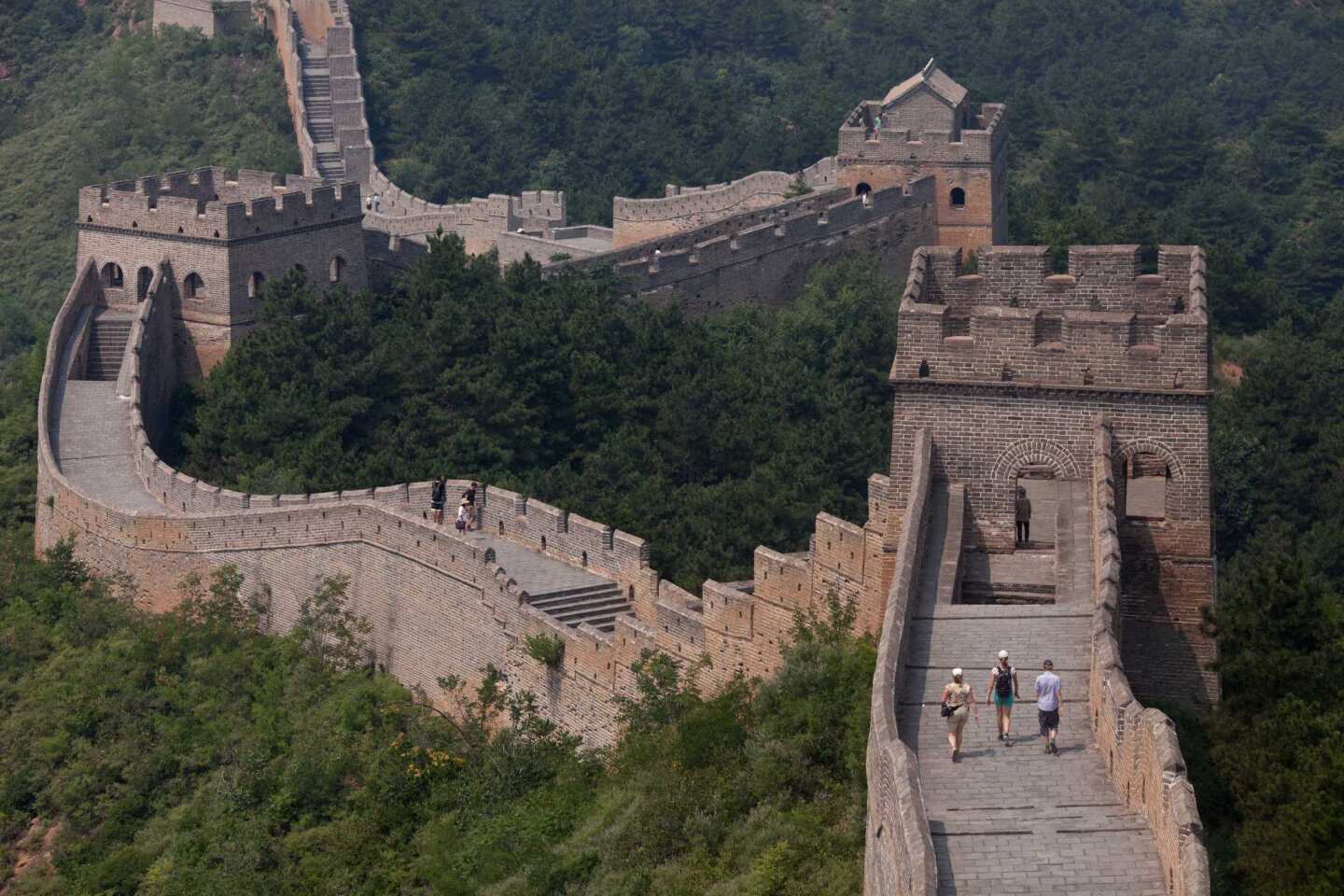
A general view shows part of the Jinshanling section of the Great Wall in Hebei province. China’s State Administration of Cultural Heritage announced that it now believes the Great Wall is a stunning 13,171 miles long. (Ed Jones / AFP / Getty Images)
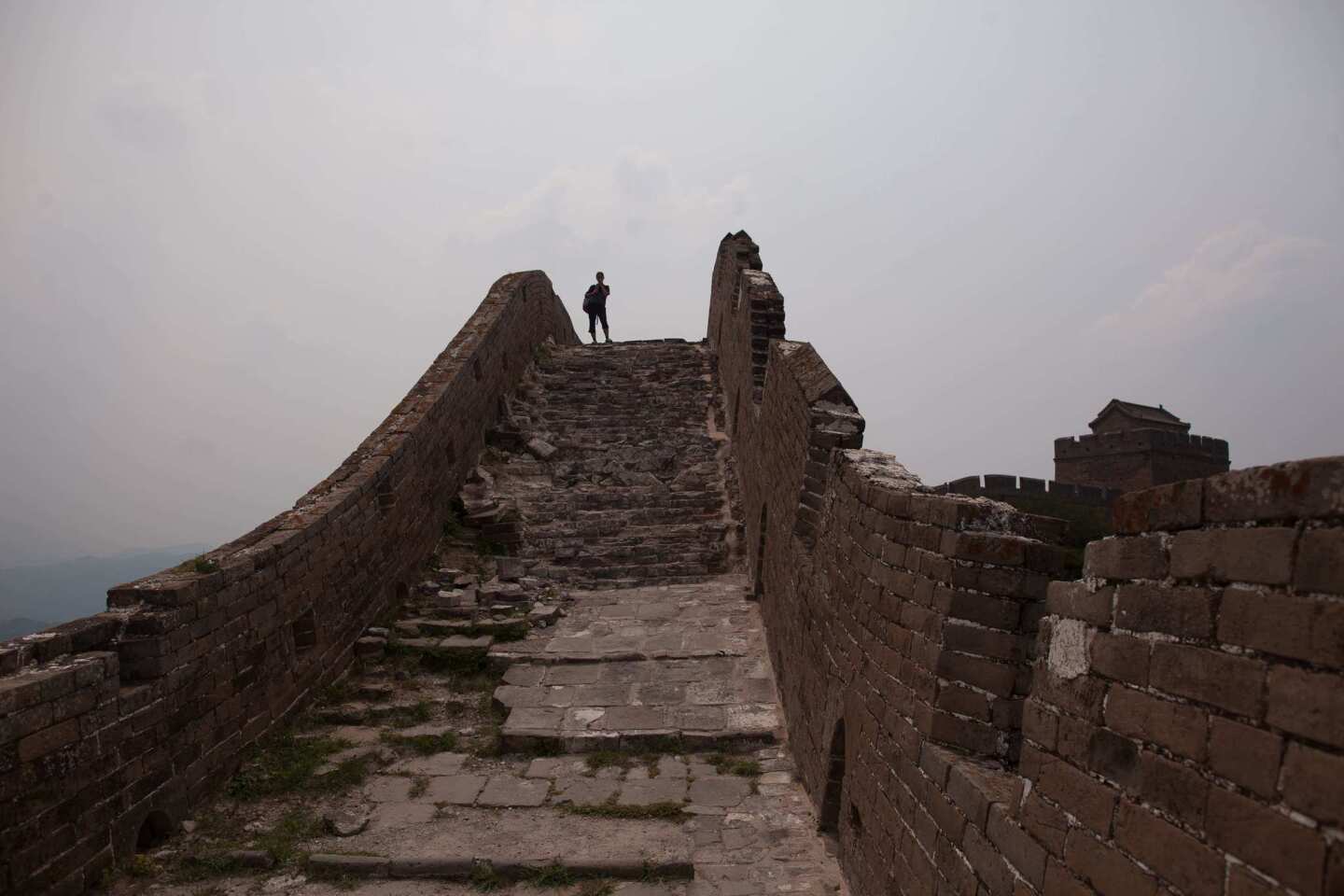
A vendor stands on the Jinshanling section of the Great Wall in Hebei province. The Great Wall was built to defend China from invasion from the north. (Ed Jones / AFP / Getty Images)
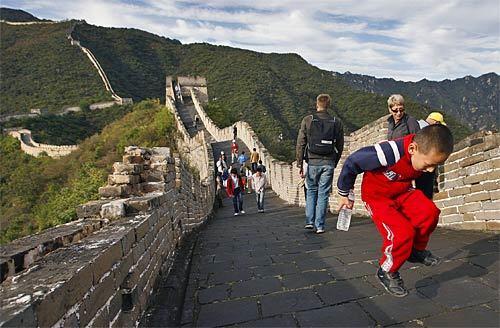
At Mutianyu, the Great Wall stretches for almost 1.4 miles, interspersed by 22 watchtowers, including three connected bastions at the lowest part of the pass. Built centuries ago to protect the empire from Mongol raiding parties that routinely swept across the border, it looks like it can survive one rambunctious kid too. (Wally Skalij / Los Angeles Times)
Advertisement
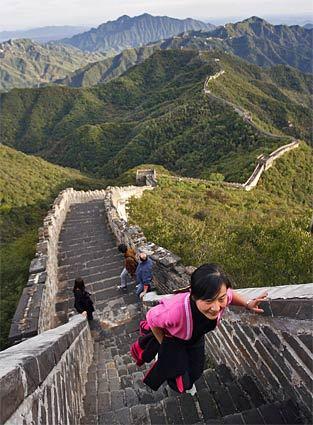
Visitors explore a section of the Great Wall at Mutianyu, near Beijing. Long after this months
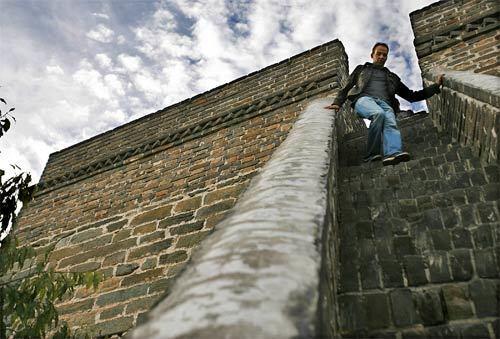
Watch your step! A visitor carefully walks down the stairs at a tower along the wall at Mutianyu, which is favored for its architecture and forested landscape. The Mutianyu wall was begun in the 6th century and reconstructed 1,000 years later. (Wally Skalij / Los Angeles Times)
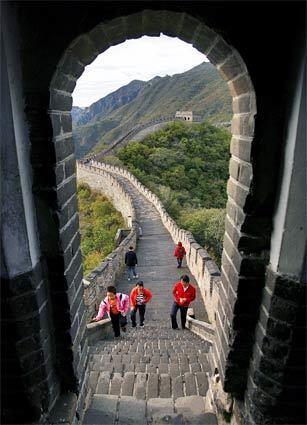
After decades of neglect, including officially sanctioned vandalism, the wall got a reprieve when Deng Xiaoping came to power in 1978. Let us love our China and restore our Great Wall, Deng wrote in 1984, launching restoration projects along the length of it, including work at Mutianyu. (Wally Skalij / Los Angeles Times)
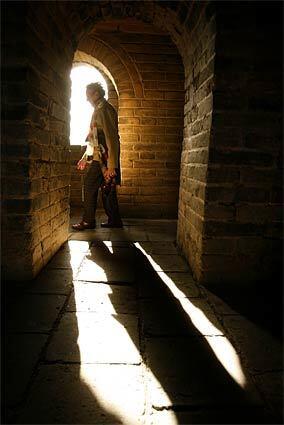
The light casts interesting shadows inside a tower along the Mutianyu Great Wall. Contrary to impressions, the Great Wall may never have crossed China in one mighty, continuous span. Experts now think of it as a series of disjointed segments built at different times in the last two millenniums and scattered in bits and pieces all over northern China. (Wally Skalij / Los Angeles Times)
Advertisement
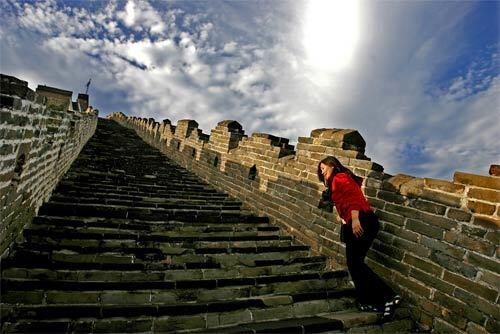
The steps are many, but the view and the history are priceless. Saving your legs for the actual hike of the landmark? At Mutianyu, many visitors avoid the stiff, 45-minute climb to the wall, and the accompanying aching leg muscles, by taking a cable car up and a toboggan ride down. (Wally Skalij / Los Angeles Times)
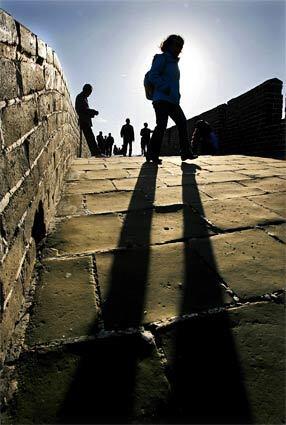
At sunset, the shadows are long on the Badaling Great Wall near Beijing. For many visitors curious about the landmark, Badaling is a starting place, the centerpiece of an estimated 380 miles of Ming Dynasty (1368-1644) fortifications in the capital region, and the highest concentration of Great Wall in China. (Wally Skalij / Los Angeles Times)
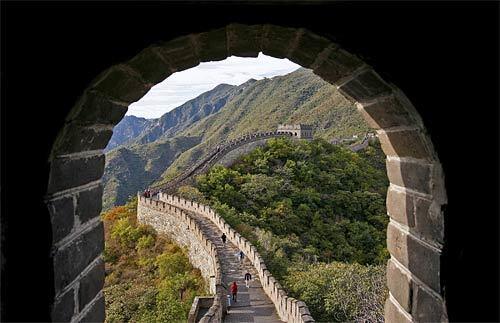
A tower entrance frames a picture-perfect stretch of the Mutianyu Wall. A decade of development, encouraged by the economic opening of China, has brought great changes to the Great Wall region north of Beijing, with condos and resorts popping up along the way. (Wally Skalij / Los Angeles Times)
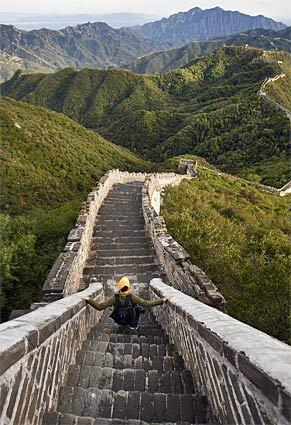
The steps look endless think of the workout! at Mutianyu, but in actuality, the landmark is only 1.4 miles long here. In the last few years, the wall has been put to some surprising uses, including a concert headlined by
Advertisement
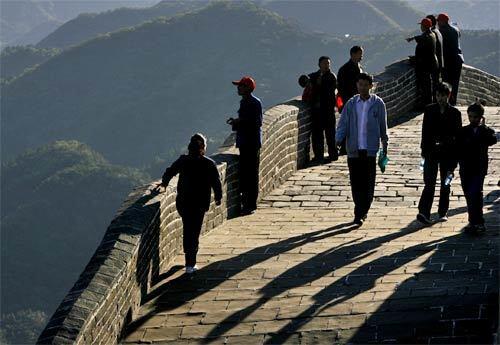
Visitors admire the view at Badaling. This stretch opened to tourists in 1957, with plentiful facilities and well-maintained, relatively gradual steps to the top where visitors see long stretches of reconstructed brick and stone wall, together with a knot of spurs and cunningly engineered Ming Dynasty watchtowers. (Wally Skalij / Los Angeles Times)
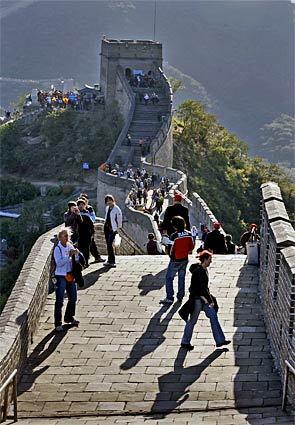
Because the Badaling Great Wall is easily accessible from Beijing, its quite popular about 4.5 million people visit each year. Desire a little more solitude? Tours are available to more out-of-the-way sections still in their natural state. (Wally Skalij / Los Angeles Times)
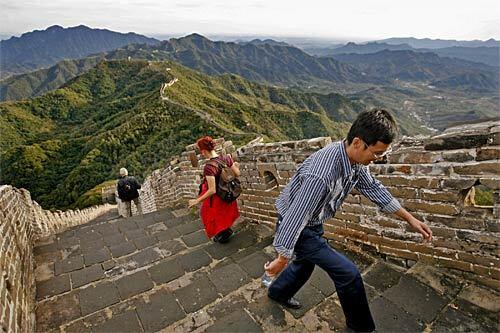
The wall at Mutianyu rides the ridgeline like a dragon, its gray brick scales glinting and its crenelated spine undulating. Here, the wall is 26 feet high, 5 yards wide and mostly made of granite. (Wally Skalij / Los Angeles Times)
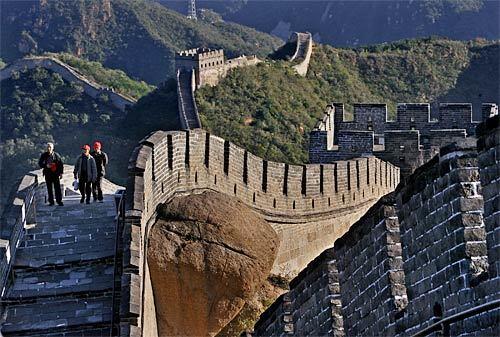
The barrier, with towers neatly spaced, follows the lay of the land at Badaling. William Lindesay, a preservationist who walked 1,500 miles of far-flung wall in 1987, calls it a giant jigsaw puzzle. You have to imagine and believe, he says. There is no place to see it all. (Wally Skalij / Los Angeles Times)
Advertisement
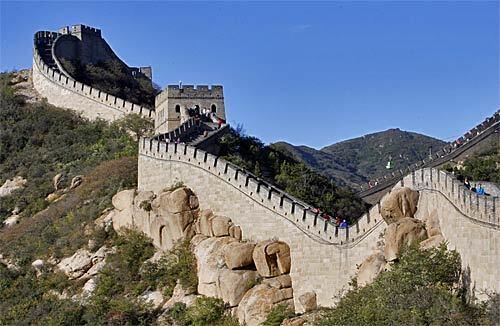
Giant boulders have been incorporated into the sides of the Badaling Great Wall. Built at a strategic pass in the mountains north of Beijing, it crosses stout gates, plunges into narrow defiles, climbs back up to the heights and seems to go on forever. (Wally Skalij / Los Angeles Times)
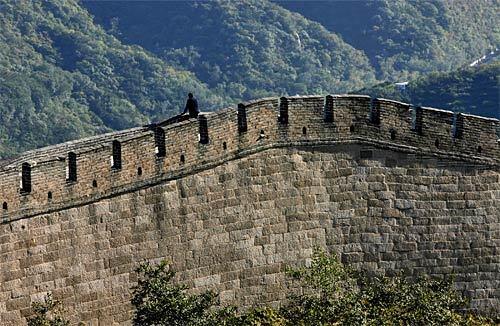
A quiet stretch of crenelated wall provides a spot for contemplation of the centuries of history the landmark has witnessed. The Great Wall is a UNESCO World Heritage Site, but because its condition was deemed so critical, it was added to the
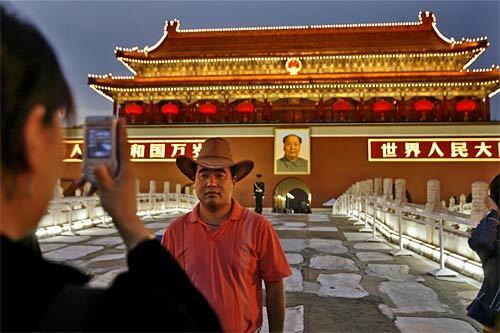
Smile and say Mao Tse-tung! A visitor commemorates his visit to Beijings Tiananmen Square with a snapshot or two. With the Summer Games fast approaching, the Chinese capital is preparing for an onslaught of visitors. (Wally Skalij / Los Angeles Times)
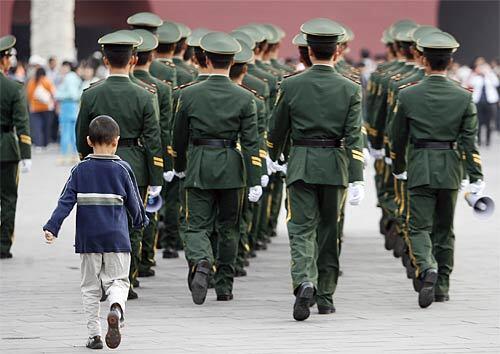
Hup-two-three-four! A boy imitates the grown-ups in this case, members of the Red Guard marching along in Tiananmen Square. (Wally Skalij / Los Angeles Times)
Advertisement
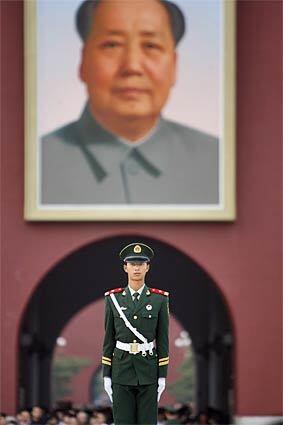
A member of the Red Guard stands ramrod straight under the watchful eyes of Chairman Mao outside Tiananmen Square. (Wally Skalij / Los Angeles Times)

L.A. Laker



